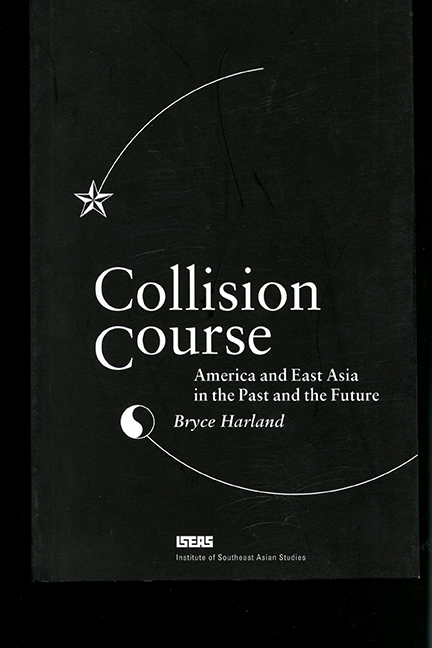Book contents
- Frontmatter
- Dedication
- Contents
- PREFACE
- INTRODUCTION
- CHAPTER 1 The West Strikes Asia
- CHAPTER 2 America Asserts Itself
- CHAPTER 3 Turmoil in China Leads to War in the Pacific
- CHAPTER 4 Cold War Sets In
- CHAPTER 5 War in Korea Deepens Confrontation
- CHAPTER 6 Vietnam – Failure, and Success
- CHAPTER 7 The Anti-Soviet Coalition
- CHAPTER 8 Japan Challenges America Again
- CHAPTER 9 Smaller Dragons Join In
- CHAPTER 10 China against a Wall
- CHAPTER 11 The Asian Diaspora
- CHAPTER 12 Regionalism in Asia
- CHAPTER 13 Whither America?
- Postscript: The Eye of the Viewer
- Bibliography
- Index
- The Author
CHAPTER 5 - War in Korea Deepens Confrontation
Published online by Cambridge University Press: 21 October 2015
- Frontmatter
- Dedication
- Contents
- PREFACE
- INTRODUCTION
- CHAPTER 1 The West Strikes Asia
- CHAPTER 2 America Asserts Itself
- CHAPTER 3 Turmoil in China Leads to War in the Pacific
- CHAPTER 4 Cold War Sets In
- CHAPTER 5 War in Korea Deepens Confrontation
- CHAPTER 6 Vietnam – Failure, and Success
- CHAPTER 7 The Anti-Soviet Coalition
- CHAPTER 8 Japan Challenges America Again
- CHAPTER 9 Smaller Dragons Join In
- CHAPTER 10 China against a Wall
- CHAPTER 11 The Asian Diaspora
- CHAPTER 12 Regionalism in Asia
- CHAPTER 13 Whither America?
- Postscript: The Eye of the Viewer
- Bibliography
- Index
- The Author
Summary
Fighting broke out in Korea, when armed forces from the North invaded the South in June 1950. Once again, the United States was caught by surprise, but reacted promptly and forcefully. Americans found themselves stuck in another long and bloody war, this time without much hope of victory. Frustration embittered them, and deepened the hostility between the United States and China. But the war stimulated a great outpouring of American resources to those Asian countries that resisted Communism, and thus laid the foundation for fast economic growth in the region.
Until the war, American policy towards Korea had not been entirely consistent. Roosevelt favored international trusteeship, as he did for other colonies, and Stalin accepted the idea at Teheran in 1944. But as the atomic bomb was developed it became less important to get the Russians into the war with Japan, and Washington had growing doubts about a Soviet occupation of Korea. The United States had concentrated on Japan itself, and when the Japanese capitulated it had no troops in the peninsula. But it proposed that responsibility for the occupation of Korea be shared, with the Russians confining themselves to the area north of the 38th parallel. The Russians agreed, perhaps in the hope of getting a similar arrangement for Japan — though this was never a real possibility. Washington did not quickly give up the goal of cooperating with Moscow on Korea. The idea of trusteeship was reaffirmed by Byrnes and Molotov at their meeting in Moscow in December 1945. But the general MacArthur put in charge of the American zone of occupation, Hodge, was determined from the outset to keep it out of Communist hands. He encouraged the more conservative Koreans, of whom the veteran nationalist Syngman Rhee made himself leader, to stand up to the left-wingers, who were initially stronger Rhee increased his popularity by opposing trusteeship, and demanding early independence.
- Type
- Chapter
- Information
- Collision CourseAmerica and East Asia in the Past and the Future, pp. 73 - 88Publisher: ISEAS–Yusof Ishak InstitutePrint publication year: 1986

